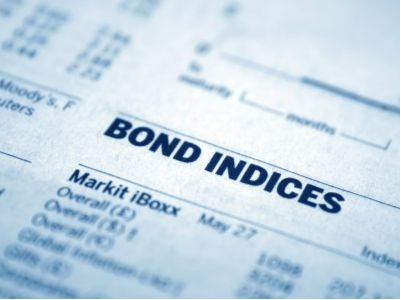The CSI A500 index has attracted over 750 billion yuan in funds, and reaching the trillion-yuan scale is not far off. Why are funds gathering in such large quantities?
2024-10-29 09:16
Less than a month after the launch of the index, the size of the CSI A500 index fund exceeded 75 billion yuan.
The off-market fundraising of the China Securities A500 fund reached the second day, with the market relatively cooling down in the morning and heating up again in the afternoon.
Let's take a look at the situation:
Firstly, after two days of issuance, the funds raised reached 30 billion yuan. According to financial media reports, as of 3 pm today, a total of 17 funds had sold about 30 billion yuan, an increase of about 10 billion yuan from the first day (which raised about 20 billion yuan). In addition, funds managed by GF, Harvest, Jiashi, Southern, and Huaxia were among the top fundraisers, with 4 products approaching 2 billion yuan and 3 exceeding 2 billion yuan.
It is worth noting that as of now, the first batch of 10 China Securities A500 ETFs listed had a total size of over 45 billion yuan. With the additional 30 billion yuan raised from off-market funds, surrounding the index since its launch on September 23rd, in less than a month, the total fund size related to the index has exceeded 75 billion yuan. Industry insiders point out that the China Securities A500 index may become the fastest to reach the hundred billion level among broad-based indexes.
Secondly, Bosera and Harvest Fund joined the self-purchase brigade. Bosera Fund will use 20 million yuan of its own funds to invest in the China Securities A500 index fund and promises to hold it for at least a year. In terms of off-market funds, Huatai Bairui and Huashang plan to invest 20 million yuan each in their China Securities A500 index products. Combined with Jiashi and Harvest funds that self-purchased during the ETF initial fundraising phase, the number of self-purchase funds is increasing.
On October 29th, Harvest Fund announced that it would use 15 million yuan of its own funds to invest in its China Securities A500 ETF-linked fund and promised to hold it for at least a year. It is noteworthy that Harvest Fund had also made self-purchases of over 16 million yuan during the initial offering of its China Securities A500 ETF. The total amount of self-purchase exceeded 31 million yuan.
Thirdly, early closing of fundraising was seen again, this time by Bosera Fund. Bosera Fund announced that it decided to close the fundraising period early, effective today, October 29th, and would no longer accept subscription applications. With only 2 days of issuance, Bosera's China Securities A500 index fund completed its initial fundraising. Channel sources indicated that the fund's size exceeded 3 billion yuan, and its main sales channel is also at China Merchants Bank. Taikang China Securities A500 ETF-linked fund, which ended early after the first day of fundraising, raised over 5 billion yuan.
In addition, financial media reports from relevant channels also indicated that there would be more China Securities A500 index funds that would end fundraising early.
Fourthly, in terms of channels, China Merchants Bank remains the absolute leader. Incomplete statistics show that China Merchants Bank's channel sales exceeded 12 billion yuan in two days, accounting for 40% of the entire market.
China Securities A500 Index Fund Size Exceeding 75 Billion Yuan
During the blazing issuance of the off-market China Securities A500 index, the 10 on-market ETFs also saw constant growth in size. As of October 25th, the total size of the 10 China Securities A500 ETFs exceeded 45 billion yuan, with funds such as Taikang China Securities A500 ETF reaching 11.8 billion yuan. On October 28th, the ETF's trading volume exceeded 2.7 billion yuan, with a net subscription of 1.7 billion yuan, estimated size of about 13.6 billion yuan. Other China Securities A500 ETFs from Harvest, Southern, had size growth of over 5 billion yuan and 4.2 billion yuan respectively. Additionally, products from Yinhe, Morgan Asset Management, and China Merchants also closely followed.
Moreover, in terms of net asset value, products from Huatai Bairui, Southern, and Rich Country have performed well and are currently above the level. In particular, the Huatai Bairui China Securities A500 ETF has consistently maintained the lead.
The reserves of the China Securities A500 Index are increasing. Up to now, funds such as Hua Bao, Yongying, Lubor Mai, and Jianxin have reported their China Securities A500 index enhancement products. Since October 16th alone, 48 off-market index, enhanced index products related to the China Securities A500 index have been reported, with 28 products awaiting regulatory approval.
In terms of new product launches, Guojin China Securities A500 index enhancement and Industrial Bank China Securities A500 index will be launched on October 31st and November 1st respectively.
The impressive scale of 750 billion yuan has surprised the market and raised two major questions: firstly, whether the additional funds for the China Securities A500 index are being transferred? Where are these funds coming from? Secondly, why are fund companies attaching so much importance to this index? Are the 48 products reported guided by regulatory approval or are they self-initiated by the companies?
Question one: Where are the additional funds for the China Securities A500 index coming from?
The hot issuance of the China Securities A500 index has left the market full of doubts, especially in the context of existing market dynamics, some believe that the funds are being transferred or relocated from other products.
There are two sources for the "transfer theory": one is from the Shanghai and Shenzhen 300 ETF; the other is from active equities, bond funds, and bank wealth management products.
The basis for the first view is that many companies, when marketing the China Securities A500 ETF, define it as a "replacement for the Shanghai and Shenzhen 300 ETF." The China Securities A500 index is compared to the "S&P 500" in the US, with the index containing 234 constituents of the Shanghai and Shenzhen 300, with a high overlap of 80.73%. Industry insiders believe that the China Securities A500 index has a wider coverage and a more balanced industry composition, making it a strong competitor to the Shanghai and Shenzhen 300 index.
Especially in recent times, with continuous outflows from the Shanghai and Shenzhen 300 ETF and continuous growth in the China Securities A500 ETF and index product sizes, this view has become more firmly established.
According to financial media reports, there is indeed guiding language in the channels that encourage investors to switch from the Shanghai and Shenzhen 300 ETF to the China Securities A500 ETF based on performance over the past decade, among other factors.
In the industry's view, such a transition may not necessarily be beneficial to investors. Looking at the ten-year perspective, the China Securities A500 price index has outperformed the Shanghai and Shenzhen 300 index, but in terms of total return index, including dividend factors, the China Securities A500 index lags behind the Shanghai and Shenzhen 300 index. The marketing rhetoric can be misleading to investors.
Secondly, there is also a view that the funds currently purchasing China Securities A500 are coming from bank wealth management and active equities. Some industry insiders have stated that active equities have indeed fallen out of favor in the current stage, which is unlikely to change in the short term, unless active equity fund managers consistently outperform. Perhaps investors will be able to rediscover their interest in it.Asserting proactive rights.In addition, during the marketing process, promoting the CSI A500 Index Fund to bond funds and bank wealth management investors requires consideration of investment suitability. It is important to provide matching products for investors with different risk tolerance levels during the sales process. A healthy product must be a dual victory for wealth management and asset allocation.
Question 2: Why are fund companies flocking to the CSI A500 Index Fund?
After inquiring from multiple sources, it has been learned that the large number of small and medium-sized companies participating in the CSI A500 index products is not due to regulatory requirements, but rather a voluntary action by fund companies. The clear distinction between large and small companies choosing ETFs and index products is generally a lack of optimism towards actively managed funds.
Some industry insiders point out that active equity is currently struggling to prosper. For small and medium-sized funds, lacking strong financial resources to launch ETFs or engage in price wars with low fees, utilizing quantitative index products has become the best solution.
In the midst of a plethora of homogeneous products, why is the CSI A500 Index Fund selling well? The JD Financial Wealth Management Research Team told the Caifeng Society reporter that the popularity of the A500 index-related products is the result of several factors, mainly four:
First, confidence and market performance are paramount. The rapid upward trend that began at the end of September attracted the attention of global investors. In the current economic environment, the capital market has been entrusted with a more important historical mission. The atmosphere of a long-term bull market has arrived, and investors who make strategic investments during market corrections are undoubtedly wise.
Second, the trend towards indexation is prevailing. Passive funds in the A-share market surpassed active funds in terms of holdings for the first time at the end of the third quarter this year. Passive equity funds have been receiving significant incremental funds for six consecutive quarters. At the same time, active equity funds have seen net outflows of funds for six consecutive quarters. Our fund market is finally following the path of developed countries where star fund managers are being abandoned, and the era of low-cost index funds reigning is upon us.
Third, the A500 index is hailed as the representative of China's third-generation broad-based index. Its compilation is more scientific, with a high proportion of new quality productivity, more closely matching the future changes in China's industrial structure, appealing to both institutional and individual investors.
Fourth, and also a very important point, the speed of product issuance pushing from top to bottom is fast. ETFs and related linked funds were approved in a very short time, with major sales channels and fund companies efficiently collaborating. The rapid dissemination of information has accelerated the public understanding of the index and the decision-making process of investors.
This article is reprinted from the Caifeng Society, GMTEight Editor: Chen Wenfang.
RECOMMEND

AMAC: In January, 137 new asset-backed special plans were filed, with a total scale of 1122.64 billion yuan.
26/02/2025

Schroder Investment: Investors should consider allocating funds to securitized credit and insurance-linked securities.
26/02/2025

Reuss County Asset Annual Reflection: Policy Tipping Point is very clear. The semiconductor industry in 2025 is a game for the brave.
26/02/2025


